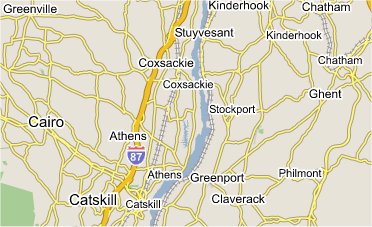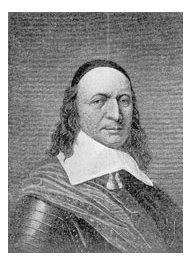June 21, 2005
HEADING FOR THE HOME STRETCH
Time: 5:50 p.m.
Place: Stuyvesant, N.Y.
Alan: I'm at Mile 136 and In north Colonial County on Route 9J, which is a road that hugs the river's east shore.

I crossed over the Rip Van Winkle Bridge and said goodbye to Chris O'Connell. I also said goodbye to Hudsonian photographer Katherine Van Acker, who joined the trek in her car with her equipment. Look for her photos on Side Salad as well as Hudsonian.I'm climbing a steep little hill that's gradually going off the Hudson River. It's kind of a neat little village that typifies that notion of what people think of upstate New York.
With Chris heading back and Katherine heading home to Catskill, I'm having a little more reflection time now and I'm thinking more about the memorial aspect of this ride. It's dedicated to Bill Fox. I think I'm really carrying on Bill's tradition as far as long-distance cycling and living your life in the spirit of long-distance cycling, which is getting to know people and towns via the bicycle.
I'm heading up this hill now and what it does offer is a really beautiful perch to look at the Hudson River to my left. The river now is slightly more narrow. It's still majestic as it heads up to Albany.
I'm about 25 miles outside the state capital. I'll have to cross over eventually to get over to the west bank to get to Albany. I'll be looking forward to my partner in this bike ride, helper Rosemary Evans. She's coming in with what's called in the business as "The Sag Car." It's a support car and she'll have drinks and snacks for the friends who will be gathering at the state capital.
At this rate it looks like I'll get there early. I was aiming for 8:30 p.m. but at this point it looks closer to 8 p.m., maybe 8:15 p.m.
I have one important stop, and that is at the Big Stew - Stewarts ice cream shop. I'll be meeting Rosemary there for a pre-celebratory ice cream, of course.
Editor's Note: Stuyvesant was named for Peter Stuyvesant, who was governor of New York, born in Holland in 1602; died in New York city in August, 1672.

He was the son of a clergyman of Friesland, and at an early age displayed a fondness for military life. He served in the West Indies, was governor of the colony of Curacao, lost a leg during the unsuccessful attack on the Portuguese island of St. Martin, and returned to Holland in 1644.
After being appointed director-general of New Netherlands, he took the oath of office in July 1646, and reached New Amsterdam in May 1647 amid such vehement firing of guns from the fort that nearly all the powder in the town was consumed in salutes.
Soon after his inauguration he organized a council and established a court of justice.
Among his first proclamations were orders to enforce the rigid observance of Sunday, prohibit the sale of liquor and firearms to the indians, and protect the revenue and increase the treasury by heavier taxation on imports.
He also worked to provide a better class of houses and taverns, establish a market and an annual cattle-fair, and the founding of a public school.
Governor Stuyvesant was above medium height, with a fine physique. He dressed with care, and usually wore slashed hose fastened at the knee by a knotted scarf, a velvet jacket with slashed sleeves over a full puffed shirt, and rosettes upon his shoes. His lost leg was replaced by a wooden one with silver bands, which accounts for the tradition that he wore a silver leg.
Although abrupt in manner, unconventional, cold and haughty, full of prejudice and passion and sometimes unapproachable, he possessed large sympathies and tender affection.
His clear judgment, quick perception, and extent of reading were remarkable. Washington Irving has humorously described him in his "Knickerbocker's History of New York." The illustrations represent the old Stadt Huys, and the tombstone of Stuyvesant in the outer wall of St. Mark's church in New York city.